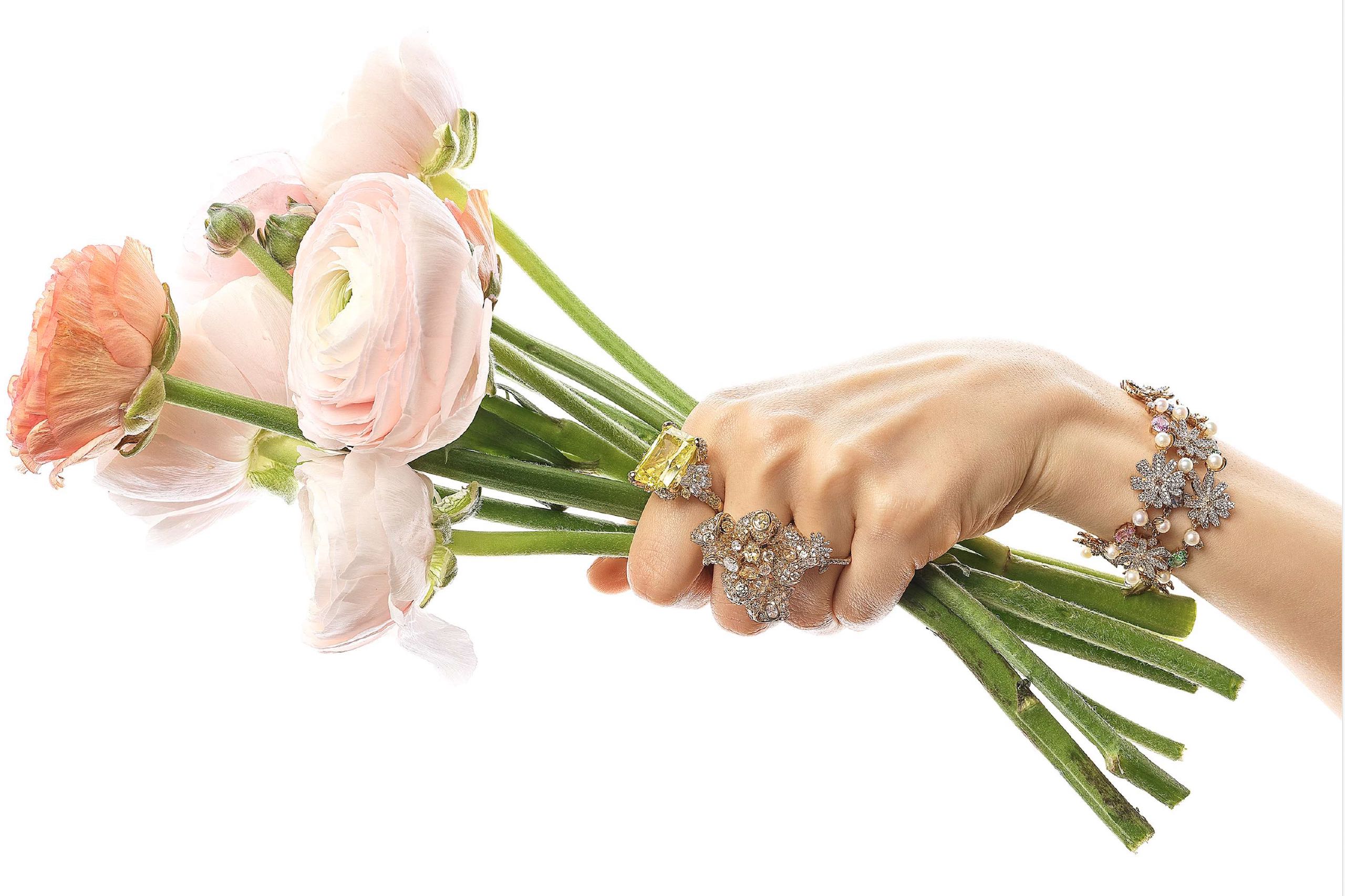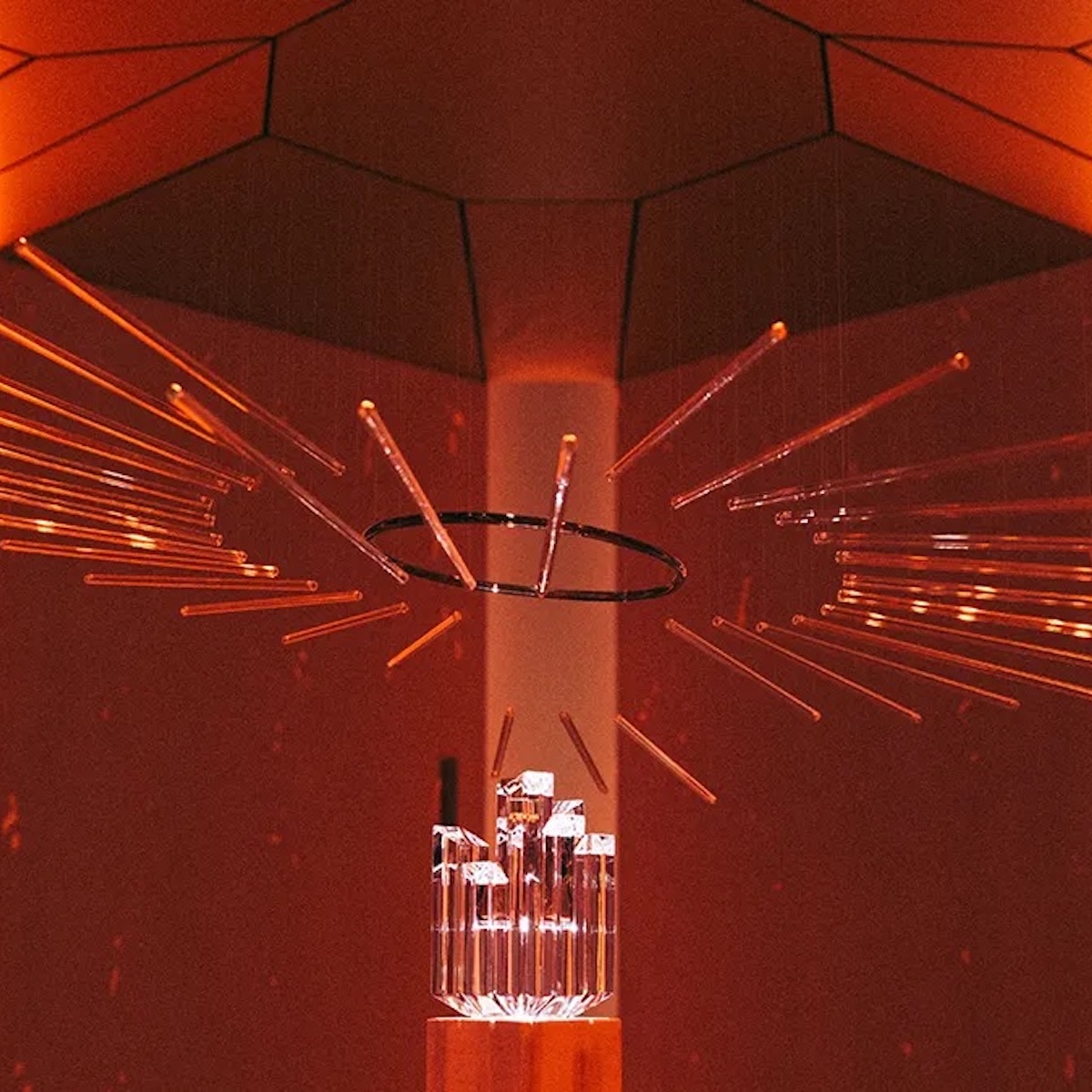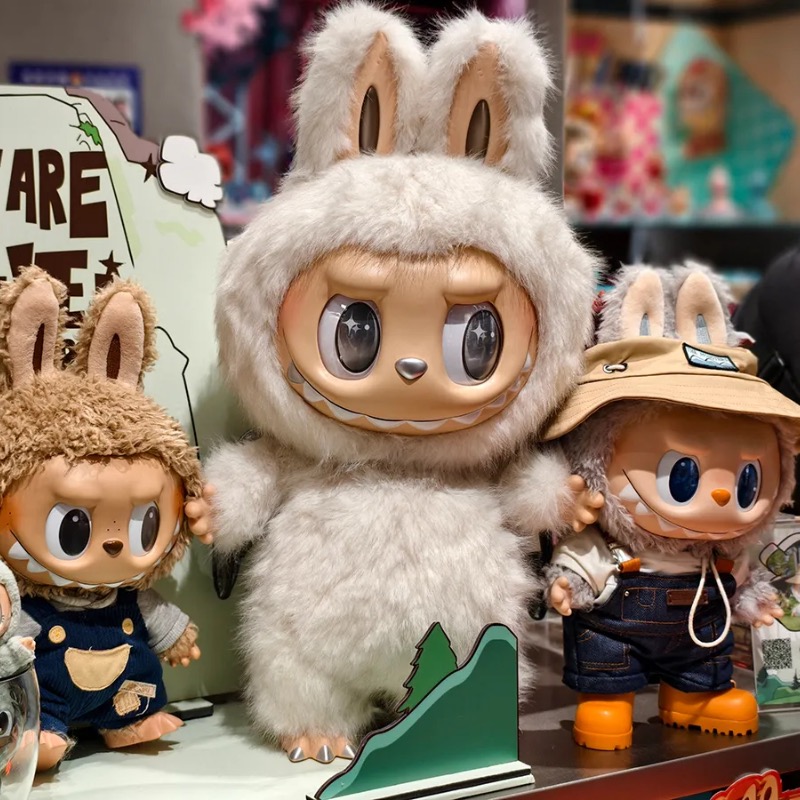In the heart of London, a quiet revolution is unfolding in the world of fine jewellery, where discarded materials—once destined for landfills or oceans—are being transformed into exquisite, heirloom-worthy pieces. This is the vision of Anabela Chan, a designer whose journey began not in the glittering ateliers of Bond Street, but in the rigorous discipline of architecture, tempered by a passion for physics, mathematics, and art. 11 years ago, Chan launched her eponymous brand, which has since become synonymous with bold, sustainable luxury, redefining what it means to craft jewellery in an era of environmental reckoning.
The ethos is simple yet profound: turn waste into wonder. It’s a philosophy that resonates deeply in a world grappling with overconsumption and ecological strain, where sustainability is the new-age mantra, carbon footprint an everyday equation, and being environmentally conscientious a matter of being. Chan’s workshop, a crucible of innovation, hums with the energy of transformation. Here, materials that society deems worthless—aluminium cans, ocean plastics, even surplus food—are meticulously refined into gemstones and metals that rival the luminescence of their mined counterparts. This is not mere recycling—it is alchemy, rooted in a deep respect for nature’s inherent beauty and a commitment to circularity.
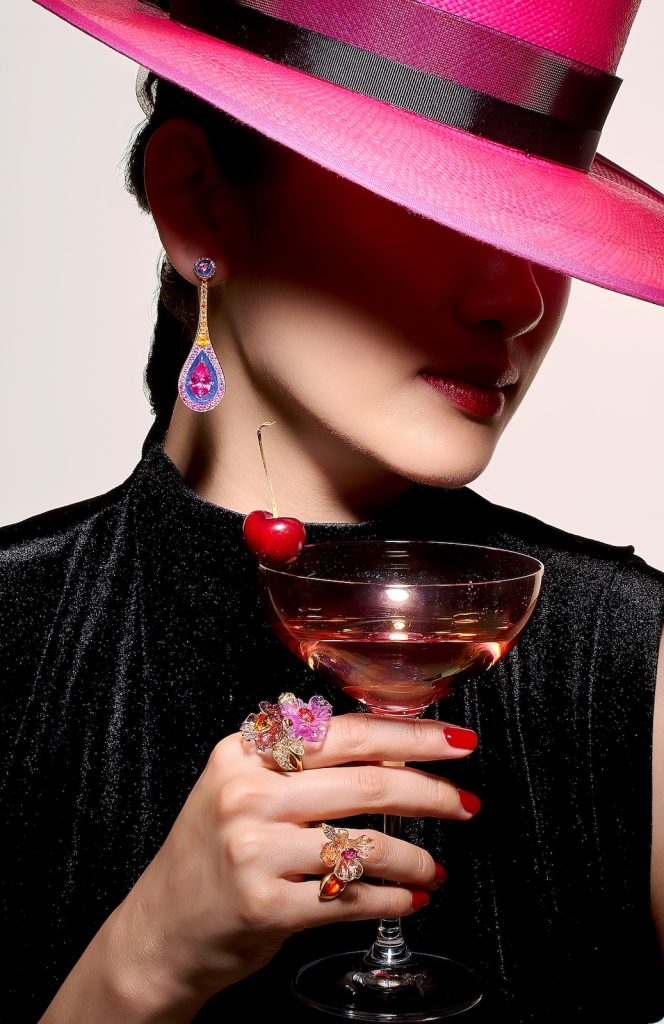
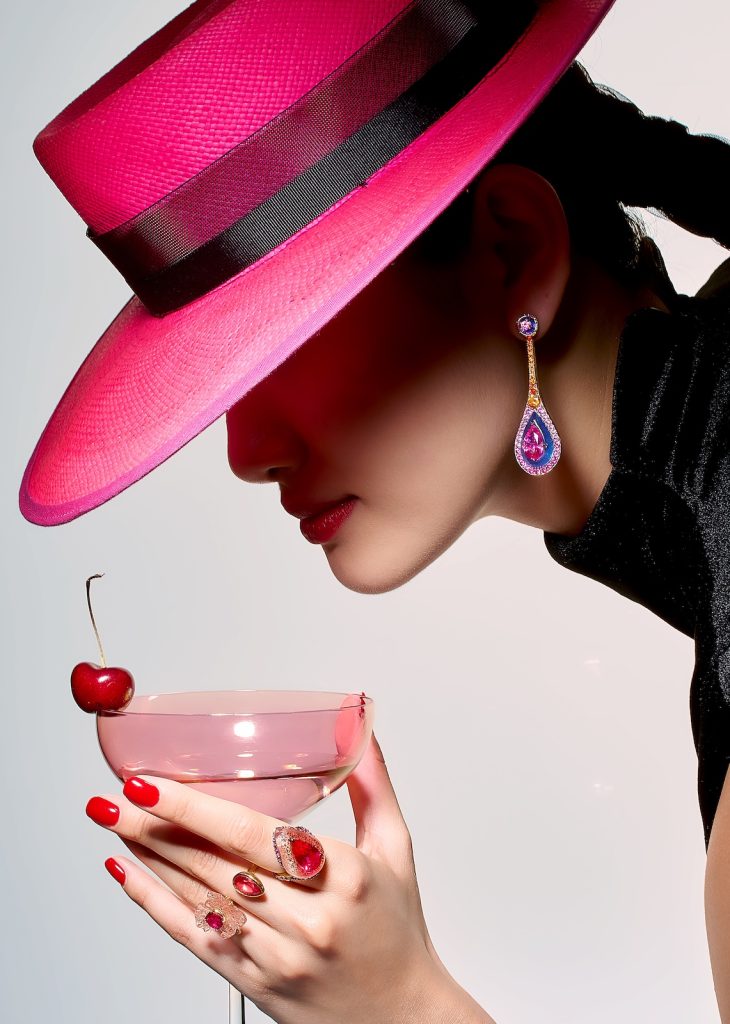
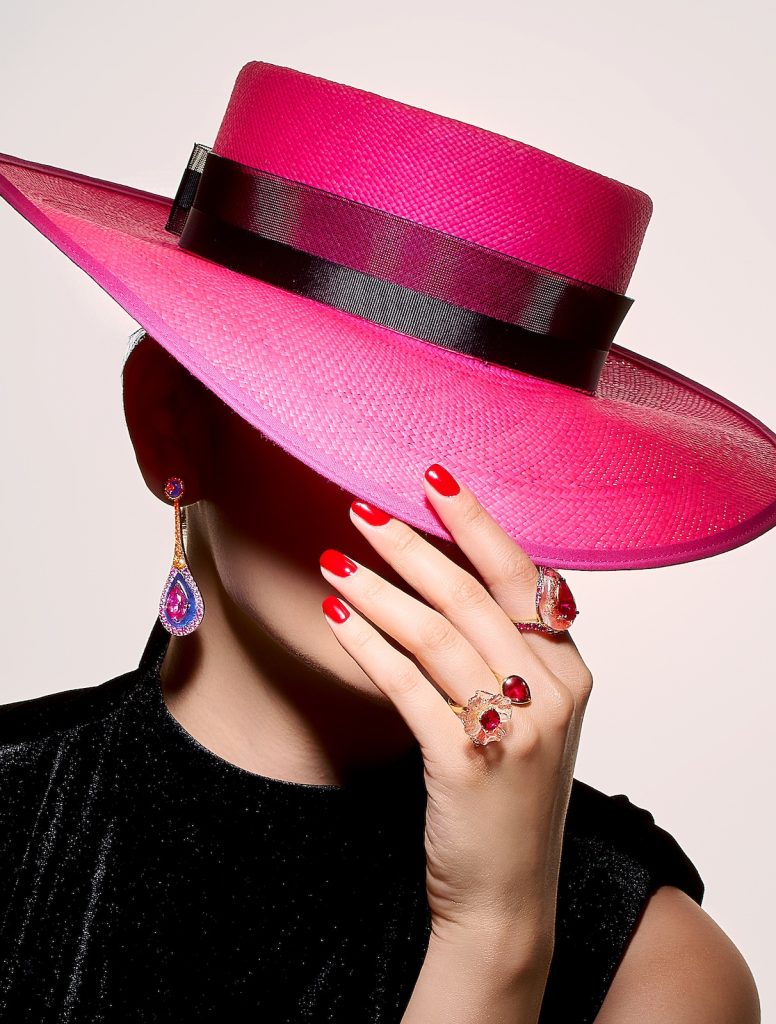
This journey began in 2020, amidst the stillness of the global pandemic, with the launch of the brand’s first Innovation collection. “This whole idea of turning trash to treasure was deeply ingrained,” Chan tells Robb Report Hong Kong in an exclusive interview. “In 2022, we launched Mermaid’s Tale, which uses ocean-waste metals—predominantly aluminium, refined until it’s pure enough to pass as virgin metal in fine jewellery,” she explains, gesturing to a case of vibrant lab-crafted stones. “I learned that 40 percent of food in the West is wasted annually—almost 10 million tonnes in the UK alone, [and] 44 million in the US. What if we could harness the pigments within these fruits and vegetables to synthesise gemstones?”
Two years of research culminated in a process that transformed discarded aluminium cans into fine jewellery, proving that even the humblest materials can be elevated to objects of desire. The Mermaid’s Tale collection, designed during lockdown, drew inspiration from marine biologists and underwater photographers from Okinawa to the Great Barrier Reef. Each piece, infused with the essence of the sea, became a testament to the ocean’s resilience and fragility, with proceeds supporting restoration projects like the one on Belitung island, Indonesia, in partnership with Sea Trees.
The latest chapter, unveiled in early 2025, is perhaps the most ambitious yet: Fruit Gems. This collection, the result of nearly four years of experimentation, transforms surplus fruits and vegetables—items deemed “waste” by supermarkets—into vibrant, durable gemstones. Chan’s epiphany came during volunteer work at a London community church, where mountains of perfectly edible produce, discarded for being past their sell-by date, sparked a radical idea. What if the vivid pigments of beetroot, blueberries, or purple sweet potatoes could be harnessed to create gemstones? The process, a blend of low-energy techniques like grinding, simmering, and freeze-drying, strips away moisture and organic matter, leaving behind a concentrated powder. This is then stabilised with a bio-resin derived from avocado seeds, agave, and soybeans, resulting in stones that shimmer with natural hues—blues from spirulina, purples from dragon fruit, and soft yellows from spinach. “It’s about learning from the past to create something new,” Chan says, tapping on different hues that have emerged from the most viable sources. “The most beautiful colours come from nature.”
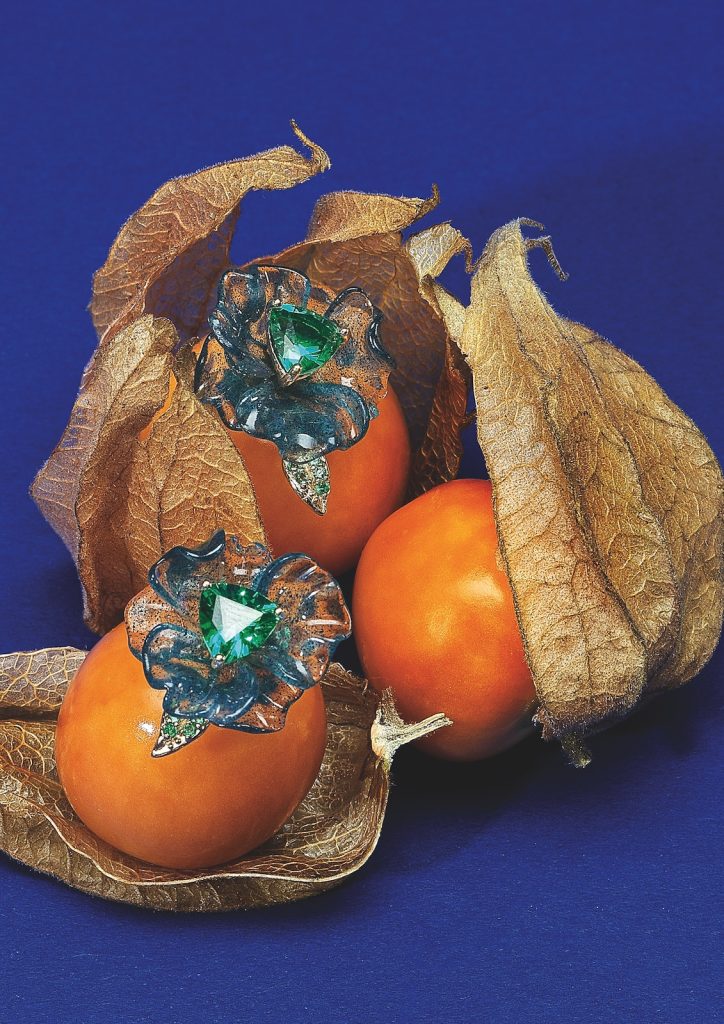
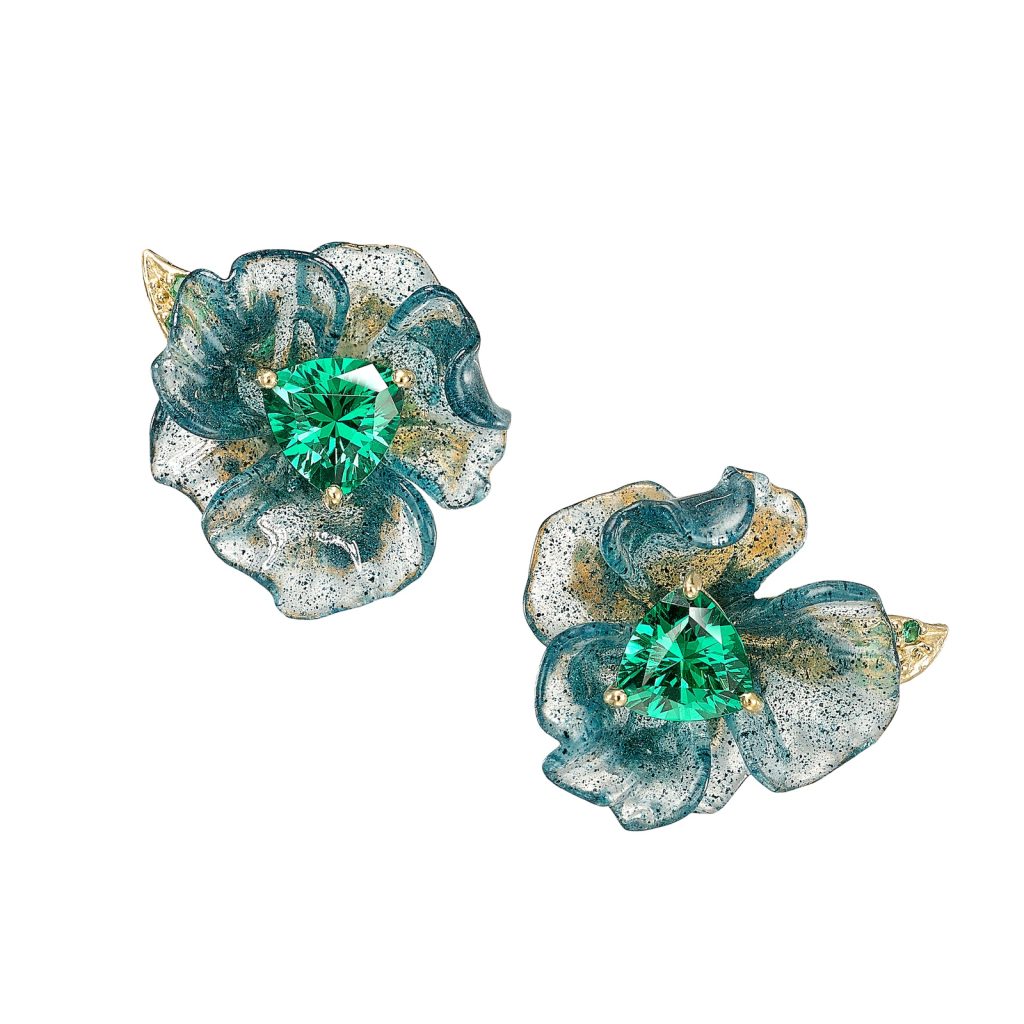
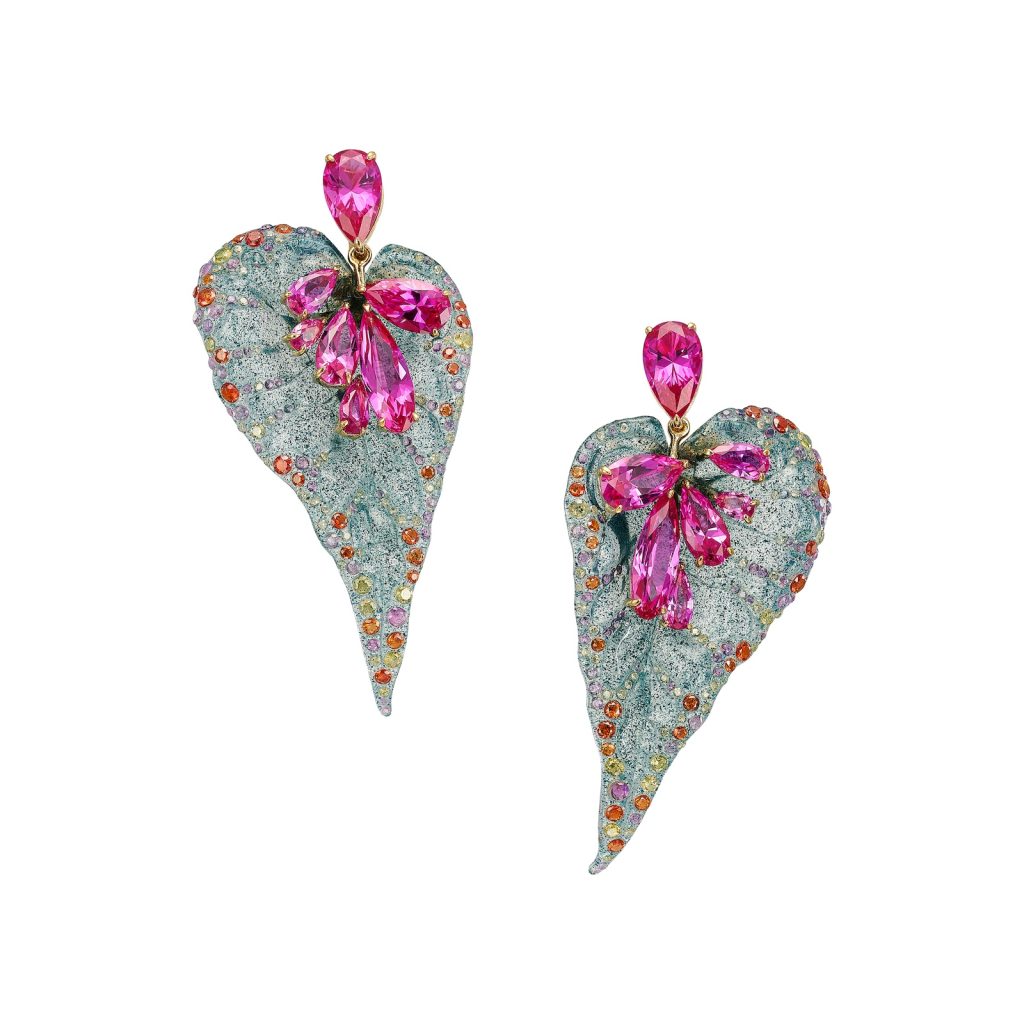
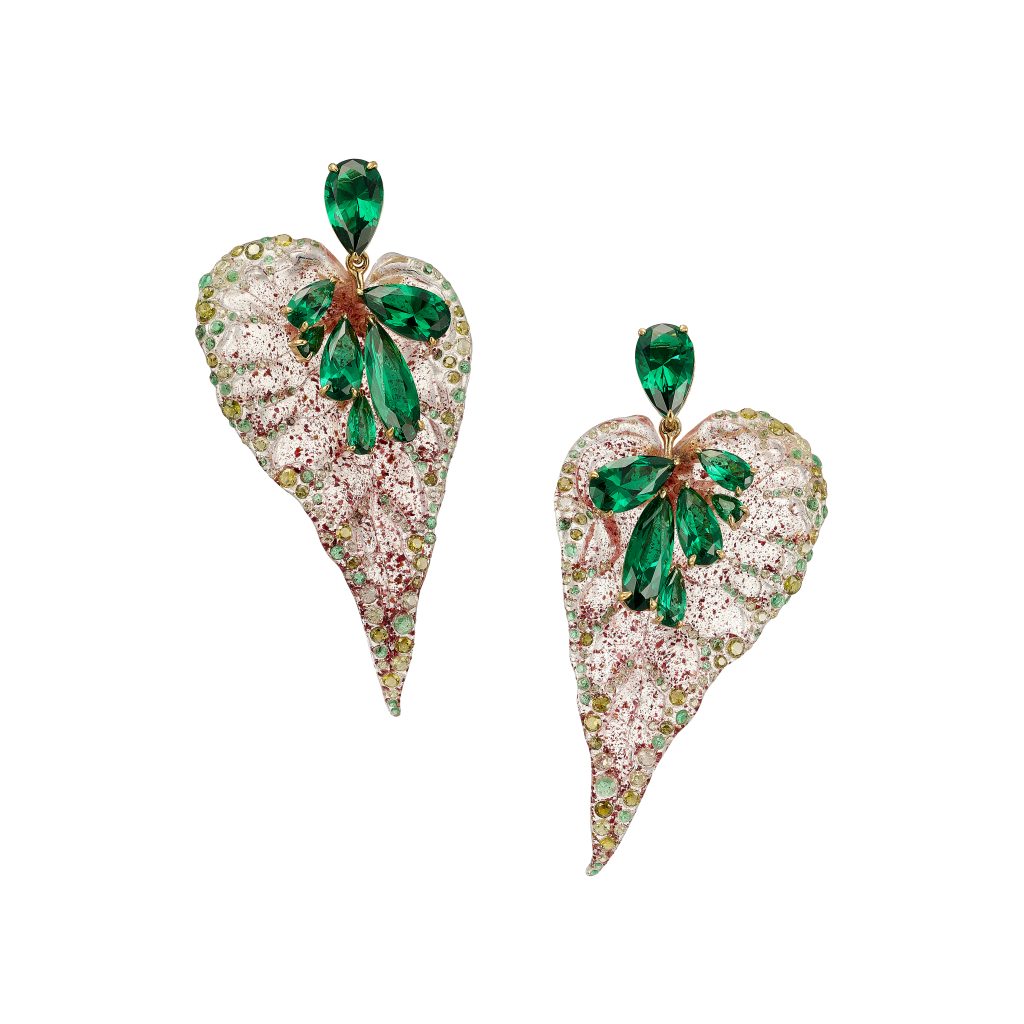

These Fruit Gems are not just beautiful; they are a statement. They challenge the notion of value, proving that the most precious colours come from nature’s bounty, not its depths. The collection also includes regenerated gemstones, crafted from the offcuts of traditional stones like rubies and lapis lazuli, bonded with the same bio-resin. Even amber, long considered passé, is reimagined with preserved autumn leaves and foliage collected from Hyde Park, suspended in translucent resin, evoking poetic modernity.
The craftsmanship is meticulous, with each stone cut by hand and treated with the same reverence as a mined ruby or diamond. The result is jewellery that feels tactile, personal, and empowering. Prices start at about HK$12,660 (£1,200), making this luxury accessible yet exclusive, with pieces rarely exceeding HK$21,100 (£2,000). Chan’s e-commerce platform, which ships to over 50 countries, ensures global reach, while trunk shows bring the collection to discerning VIP clients. Plans to partner with Lane Crawford signal further expansion in Asia, a region where the brand’s vibrant, youthful aesthetic has found a devoted following.
This is jewellery that tells a story. It’s in the ruby ring framed by beetroot-derived gems, worn by a bride who requested her wedding bouquet be preserved in resin for a bespoke piece. It’s in the lapel pins and signet rings adorning Formula 1 drivers and Hollywood stars like Colman Domingo at the Oscars. Celebrities like Taylor Swift, Rihanna, and Beyoncé have embraced the brand, drawn not just to its bold colours but to its ethos of sustainability and innovation. From its early days, when a chance encounter with Lady Gaga’s stylist sparked global interest, the brand has grown through word-of-mouth and a shared appreciation for its vision.
Chan’s background in architecture and fashion—having worked with Alexander McQueen and Richard Rogers—infuses her work with a rare blend of precision and creativity. Unlike the frenetic pace of fashion, jewellery allows for a slower, more deliberate craft, where time and care are luxuries in themselves. This non-seasonal approach rejects the disposability of trends, focusing instead on pieces that endure, both in durability and sentiment. A pebble from a beach, inscribed with a heartfelt message, holds as much value as a diamond in this worldview, where personal connection trumps perceived worth.
“Ultimately, it’s about how jewellery makes you feel,” Chan says, balancing vintage pieces with her own novel creations in her personal, private collection. “I wear natural diamonds as much as I wear lab-grown diamonds—it doesn’t make me feel any different.”
In an industry often bound by tradition, Chan’s brand dares to question what luxury means. It’s not about rarity or exclusivity, but about ingenuity and responsibility. By turning food waste into gemstones, ocean plastics into metals, and autumn leaves into amber, it offers a new narrative: one where beauty is sustainable, and value is redefined. As Chan puts it, “Jewellery is not just an accessory; it’s a story waiting to be told. Each piece captures moments, emotions, and memories, transforming the ordinary into the extraordinary.”
In her hands, those colours become timeless treasures, proving that luxury can be both dazzling and conscientious.
Learn more about Anabela Chan Joaillerie at anabelachan.com.
All images courtesy of Anabela Chan.





